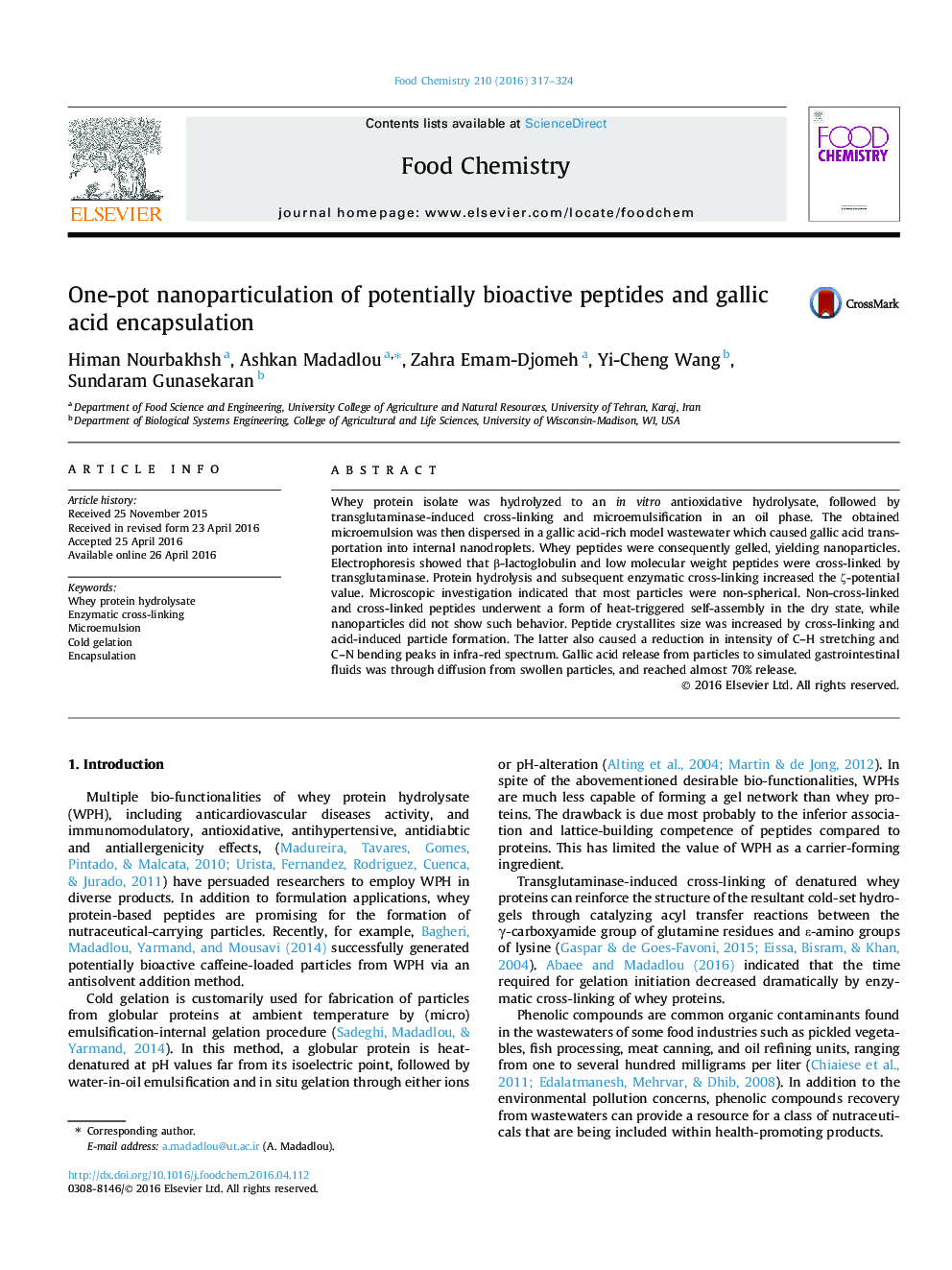| Article ID | Journal | Published Year | Pages | File Type |
|---|---|---|---|---|
| 7588244 | Food Chemistry | 2016 | 8 Pages |
Abstract
Whey protein isolate was hydrolyzed to an in vitro antioxidative hydrolysate, followed by transglutaminase-induced cross-linking and microemulsification in an oil phase. The obtained microemulsion was then dispersed in a gallic acid-rich model wastewater which caused gallic acid transportation into internal nanodroplets. Whey peptides were consequently gelled, yielding nanoparticles. Electrophoresis showed that β-lactoglobulin and low molecular weight peptides were cross-linked by transglutaminase. Protein hydrolysis and subsequent enzymatic cross-linking increased the ζ-potential value. Microscopic investigation indicated that most particles were non-spherical. Non-cross-linked and cross-linked peptides underwent a form of heat-triggered self-assembly in the dry state, while nanoparticles did not show such behavior. Peptide crystallites size was increased by cross-linking and acid-induced particle formation. The latter also caused a reduction in intensity of C-H stretching and C-N bending peaks in infra-red spectrum. Gallic acid release from particles to simulated gastrointestinal fluids was through diffusion from swollen particles, and reached almost 70% release.
Related Topics
Physical Sciences and Engineering
Chemistry
Analytical Chemistry
Authors
Himan Nourbakhsh, Ashkan Madadlou, Zahra Emam-Djomeh, Yi-Cheng Wang, Sundaram Gunasekaran,
